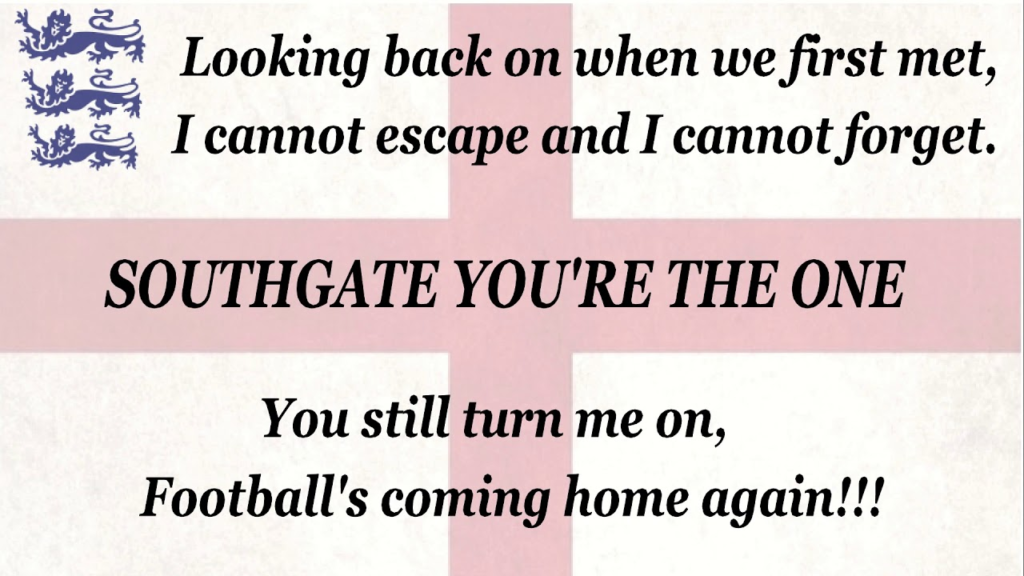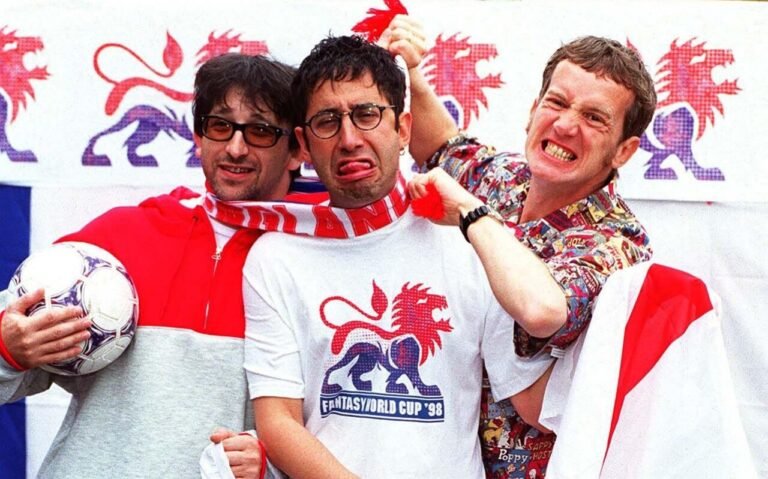The roar of the crowd, a symphony of voices united in a shared passion – this is the essence of football chants. For England fans, these chants are more than just noise; they are an expression of national pride, a release of pent-up emotions, and a powerful force that can lift the spirits of players and intimidate opponents.
This article delves into the fascinating world of England football chants, exploring their origins, evolution, and the impact they have on the game.
A History of Harmony: The Evolution of England Chants
The roots of England football chants can be traced back to the early days of the game. Simple, repetitive melodies and call-and-response patterns were common, often drawing inspiration from popular songs of the time. These early chants were primarily focused on expressing support for the team and creating a vibrant atmosphere.
The mid-20th century saw the emergence of more elaborate chants, often incorporating witty lyrics and playful rhymes. This period also witnessed the rise of terrace culture, where fans would congregate in dedicated sections of the stadium, creating a unique and intimidating atmosphere.
The latter half of the 20th century witnessed a significant shift in the nature of England chants. With the increasing influence of popular music, chants became more sophisticated, incorporating elements of rock, pop, and even rap. This era also saw the emergence of player-specific chants, celebrating the individual brilliance of star players.
The Modern Era: A Tapestry of Sounds
Today, England football chants are a diverse tapestry of sounds, reflecting the evolving cultural landscape of the nation. From traditional anthems to modern renditions of popular songs, the repertoire of England fans is constantly evolving.
“It’s Coming Home”: Perhaps the most iconic of all England chants, “It’s Coming Home” has become synonymous with the nation’s hopes and dreams of football glory.1 This catchy tune, inspired by the 1996 Euro song “Three Lions,” captures the collective yearning for an international trophy.
“Sweet Caroline”: Neil Diamond’s timeless classic has been adopted by England fans as their unofficial anthem. The simple, repetitive melody makes it easy to sing along to, creating a sense of unity and camaraderie among supporters.
Player-Specific Chants: These chants celebrate the unique skills and personalities of individual players. From the rhythmic chants for Harry Kane to the playful tunes dedicated to Marcus Rashford, these personalized anthems add a unique dimension to the matchday experience.
The Impact of Chants on the Game
England football chants play a crucial role in shaping the matchday experience. They create an electric atmosphere, lifting the spirits of players and intimidating opponents. The collective voice of the crowd can be a powerful force, driving the team forward and inspiring them to achieve greatness.
However, the impact of chants extends beyond the confines of the stadium. They serve as a powerful expression of national identity and cultural pride. They bring people together, fostering a sense of community and shared purpose.

The Controversial Side: Dealing with Offensive Chants
While football chants are generally intended to be celebratory and uplifting, some have unfortunately crossed the line into offensive and discriminatory territory. These chants, often targeting opposing players or fans, have no place in modern football.
Football governing bodies have taken steps to address this issue, implementing stricter regulations and imposing sanctions on clubs and fans who engage in discriminatory behavior.
“It’s Coming Home”: A National Anthem
The iconic “It’s Coming Home,” inspired by the 1996 Euro song “Three Lions,” has become synonymous with English football.
This anthem encapsulates the nation’s hopes and dreams, capturing the collective yearning for international football glory.
Its enduring popularity reflects the deep-seated emotional connection fans have with the chant and the shared desire for success on the world stage.
“Sweet Caroline”: A Timeless Classic
Neil Diamond’s “Sweet Caroline” has been seamlessly adopted as an unofficial England anthem.
It’s simple and repetitive melody makes it easy for fans to sing along, fostering a sense of unity and shared experience across generations.
The chant’s enduring popularity highlights the power of music to transcend generations and unite fans in a common purpose.
Player-Specific Chants: A Unique Expression
Player-specific chants celebrate the individual brilliance of players.
From the rhythmic chants for Harry Kane to the playful tunes dedicated to Marcus Rashford, these personalized anthems add a unique dimension to the matchday experience.
They reflect the growing emphasis on individual players and their contributions to the team’s success.
The Future of England Chants
The future of England football chants is likely to be shaped by a number of factors, including the evolving cultural landscape, technological advancements, and the ongoing efforts to combat discriminatory behavior.
We can expect to see continued innovation in chant creation, with fans incorporating new musical styles and cultural references into their repertoire. Technological advancements, such as social media and online platforms, will likely play an increasingly important role in the dissemination and evolution of chants.
Final Thoughts
England football chants are more than just noise; they are an integral part of the nation’s footballing culture. They reflect the passion, pride, and collective spirit of the English fans, creating an unforgettable atmosphere at stadiums across the country. As the game continues to evolve, so too will the landscape of England chants, ensuring that this unique and vibrant tradition continues to thrive for generations to come.
FAQs
What are the historical roots of England football chants?
Early England football chants were simple, often drawing inspiration from popular folk songs and traditional melodies. Call-and-response patterns were common, creating a sense of collective participation among fans. These chants primarily aimed to express basic support for the team and generate a vibrant atmosphere within the stadium. The rise of terrace culture in the mid-20th century significantly influenced their development, fostering a unique environment for fans to congregate and collectively voice their support, leading to more complex and creative chants.
How have England chants evolved over time?
England football chants have undergone significant evolution. They have increasingly incorporated elements of popular music genres like rock, pop, and rap, leading to more sophisticated melodies and rhythms. Player-specific chants have emerged, celebrating individual players’ skills and personalities, adding a personal touch and depth. The rise of social media and online platforms has facilitated the rapid spread of new chants, allowing fans to connect, exchange ideas, and rapidly disseminate creations, significantly accelerating the pace of change and innovation within the world of football chants.
To read more, Click Here
